80–84 Chase Side, Southgate, London, N14 5PH
The old Crown Inn was a long-standing fixture on Chase Side, until its demolition in the 1960s. It stood on the site of Crown Parade and is remembered in the name of this Wetherspoon pub.
Photographs and text about Southgate village.
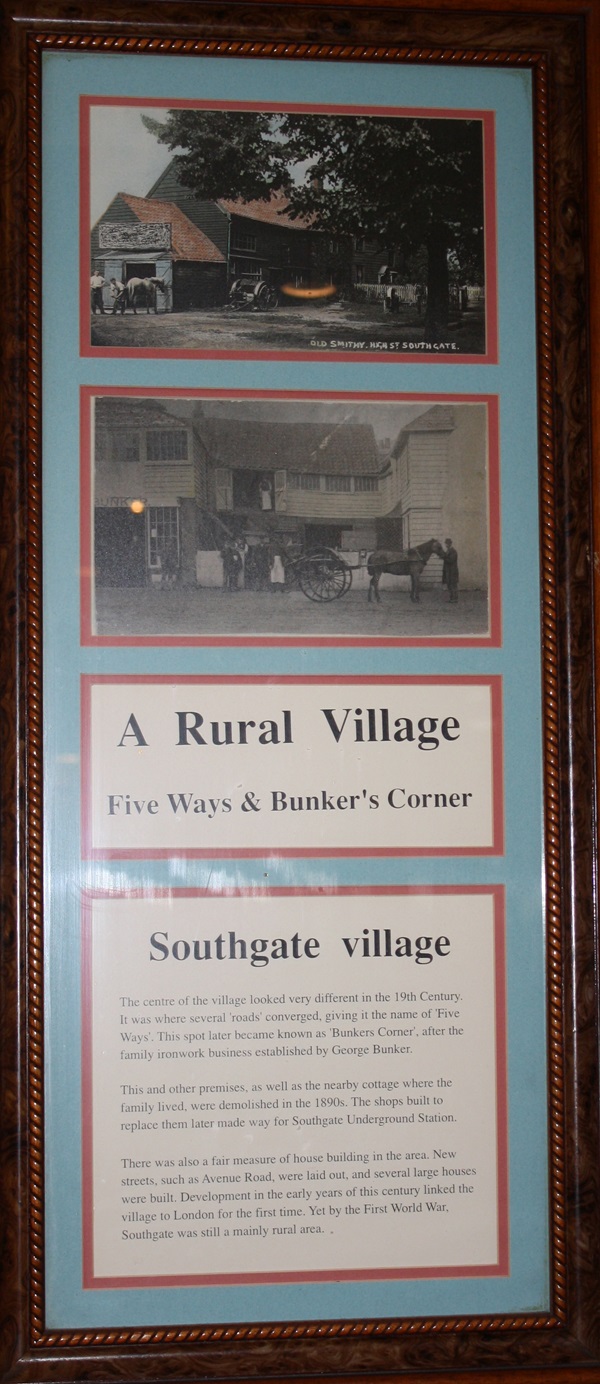
The text reads: The centre of the village looked very different in the 19th century. It was where several roads converged, giving it the name of Five Ways. This spot later became known as Bunkers Corner, after the family ironwork business established by George Bunker.
This and other premises, as well as the nearby cottage where the family lived, were demolished in the 1890s. The shops built to replace them later made way for Southgate Underground Station.
There was also a fair measure of house building in the area. New streets, such as Avenue Road, were laid out, and several large houses were built. Development in the early years of this century linked the village to London for the first time. Yet by the First World War, Southgate was still a mainly rural area.
Photographs and text about the Crown Hotel.
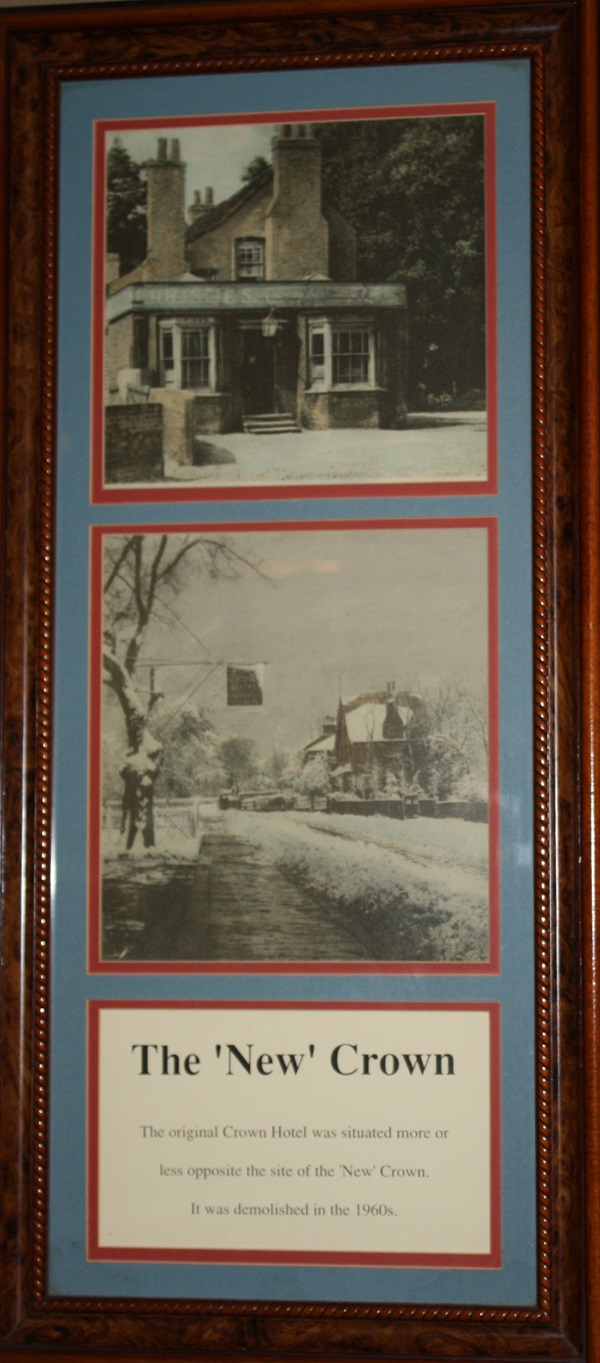
The text reads: The original Crown Hotel was situated more or less opposite the site of the ‘New’ Crown. It was demolished in the 1960s.
A print and text about Thomas Lipton.
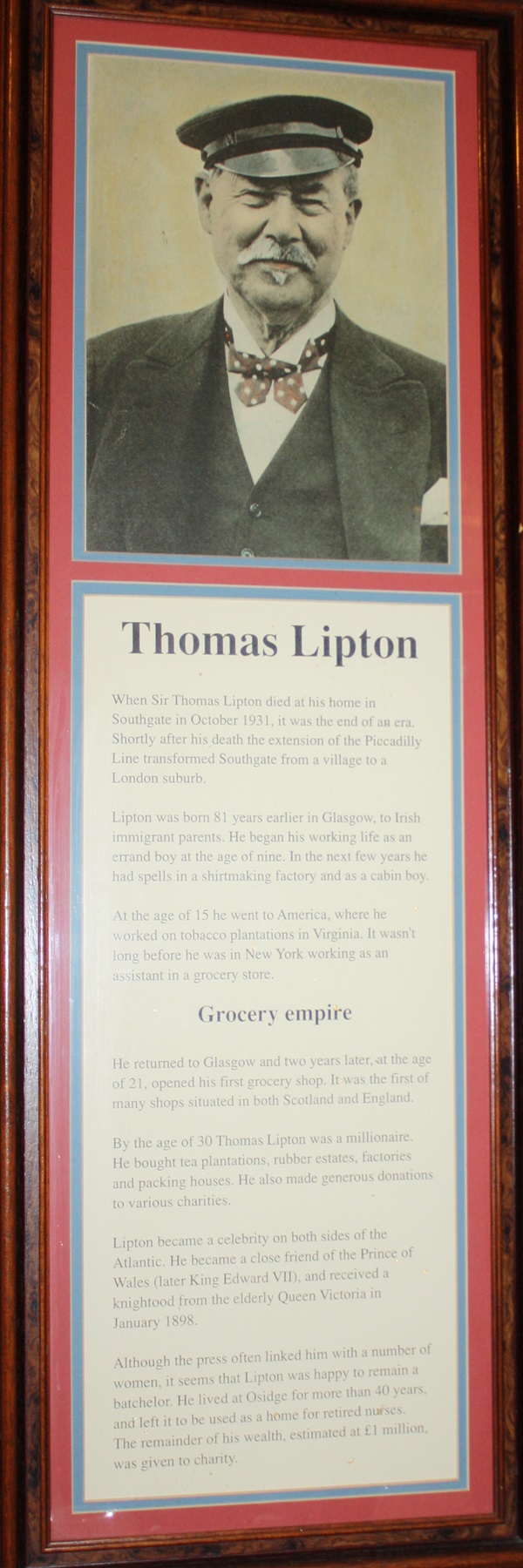
The text reads: When Sir Thomas Lipton died at his home in Southgate in October 1931, it was the end of an era. Shortly after his death the extension of the Piccadilly Line transformed Southgate from a Village to a London suburb.
Lipton was born 81 years earlier in Glasgow, to Irish immigrant parents. He began his working life as an errand boy at the age of nine. In the next few years he had spells in shirtmaking factory and as a cabin boy.
At the age of 15 he went to America, where he worked on tobacco plantations in Virginia. It wasn’t long before he was in New York working as an assistant in a grocery store.
He returned to Glasgow and two years later, at the age of 21, opened his first grocery shop. It was the first of many shops situated in both Scotland and England.
By the age of 30 Thomas Lipton was a millionaire. He bought tea plantations, rubber estates, factories and packing houses. He also made generous donations to various charities.
Lipton became a celebrity on both sides of the Atlantic. He became a close friend of the Prince of Wales (later King Edward VII), and received a knighthood from the elderly Queen Victoria in January 1898.
Although the press often linked him with a number of women, it seems that Lipton was happy to remain a bachelor. He lived at Osidge for more than 40 years, and left it to be used as a home for retired nurses. The remainder of his wealth, estimated at £1 million, was given to charity.
Text about the Walker family.
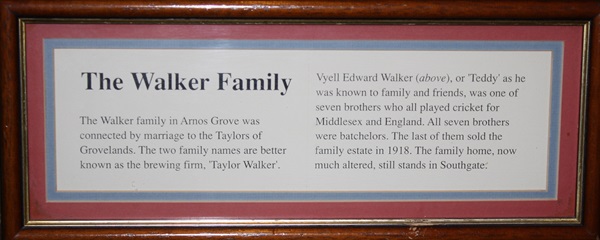
The text reads: The Walker family in Arnos Grove was connected by marriage to the Taylors of Grovelands. The two family names are better known as the brewing firm, ‘Taylor Walker’.
Vyell Edward Walker or Teddy as he was known to family and friends, was one of seven brothers who all played cricket for Middlesex and England. All seven brothers were bachelors. The last of them sold the family estate in 1918. The family home, now much altered, still stands in Southgate.
Text about Harry Lauder.
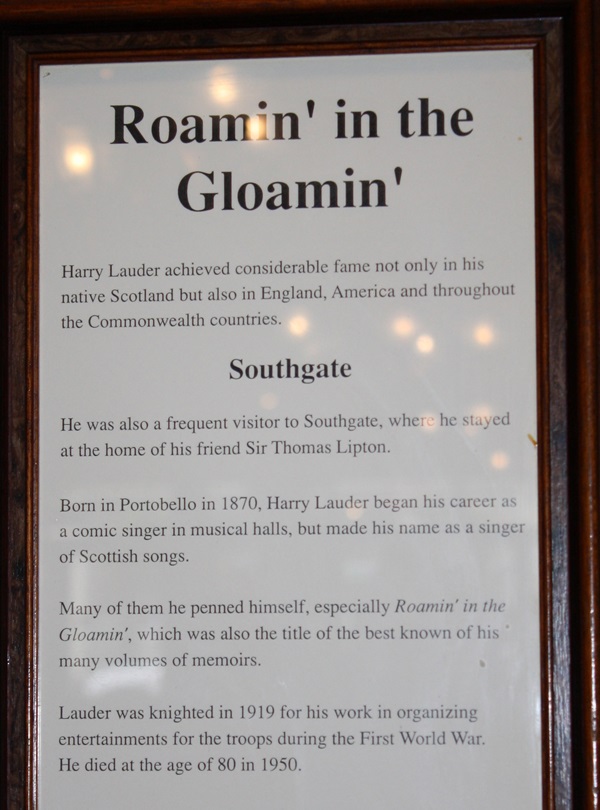
The text reads: Harry Lauder achieved considerable fame not only in his native Scotland but also in England, American and throughout the Commonwealth countries.
He was also a frequent visitor to Southgate, where he stayed at the home of his friend Sir Thomas Lipton.
Born in Portobello in 1870, Harry Lauder began his career as a comic singer in musical halls, but made his name as a singer of Scottish songs.
Many of them he penned himself, especially Roamin’ in the Gloamin’, which was also the title of the best known of his many volumes of memoirs.
Lauder was knighted in 1919 for his work in organising the entertainments for the troops during the First World War. He died at the age of 80 in 1950.
Prints and text about Osidge.
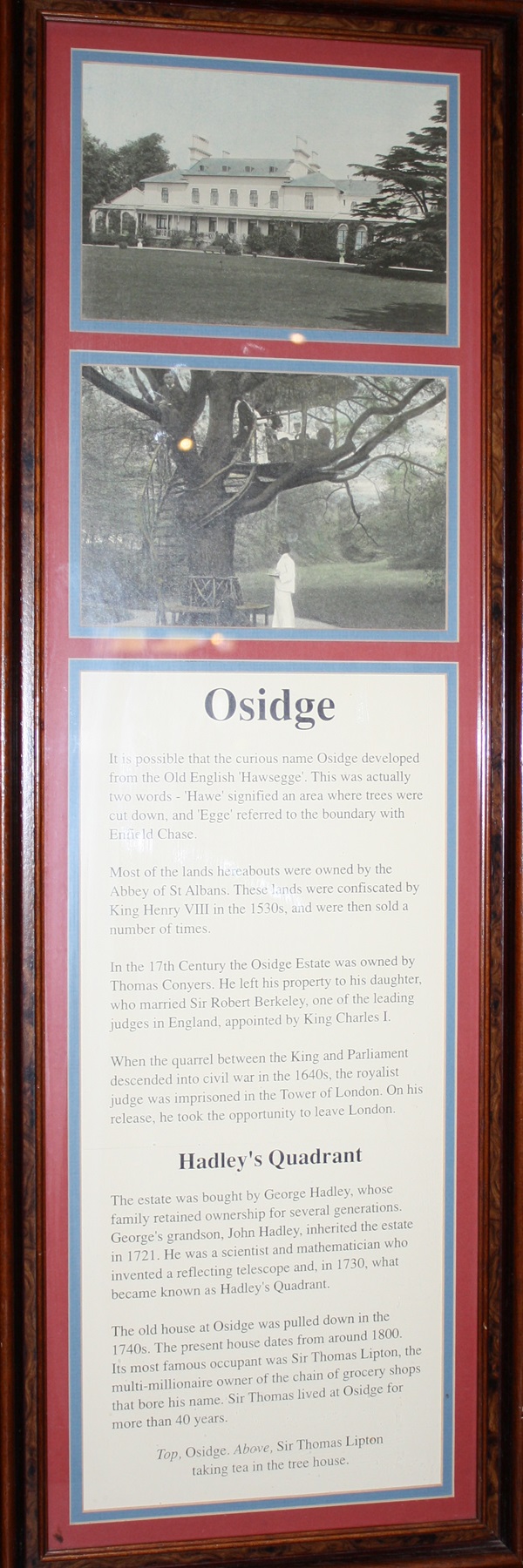
The text reads: It is possible that the curious name Osidge developed from the Old English ‘Hawsegge’. This was actually two words – ‘Hawe’ signified an area where trees were cut down, and ‘Egge’ referred to the boundary with Enfield Chase.
Most of the lands hereabouts were owned by the Abbey of St Albans. These lands were confiscated by King Henry VIII in the 1530s, and were then sold a number of times.
In the 17th century the Osidge Estate was owned by Thomas Conyers. He left his property to his daughter, who married Sir Robert Berkeley, one of the leading judges in England, appointed by King Charles I.
When the quarrel between the King and Parliament descended into civil war in the 1640s, the royalist judge was imprisoned in the Tower of London. On his release, he took the opportunity to leave London.
The estate was bought by George Hadley, whose family retained ownership for several generations. George’s grandson, John Hadley, inherited the estate in 1721. He was a scientist and mathematician who invented a reflecting telescope and, in 1730, what became known as Hadley’s Quadrant.
The old house at Osidge was pulled down in the 1740s. The present house dates from around 1800. Its most famous occupant was Sir Thomas Lipton, the multi-millionaire owner of the chain of grocery shops that bore his name. Sir Thomas lived at Osidge for more than 40 years.
A print and text about George Robbins and William Wadkins.
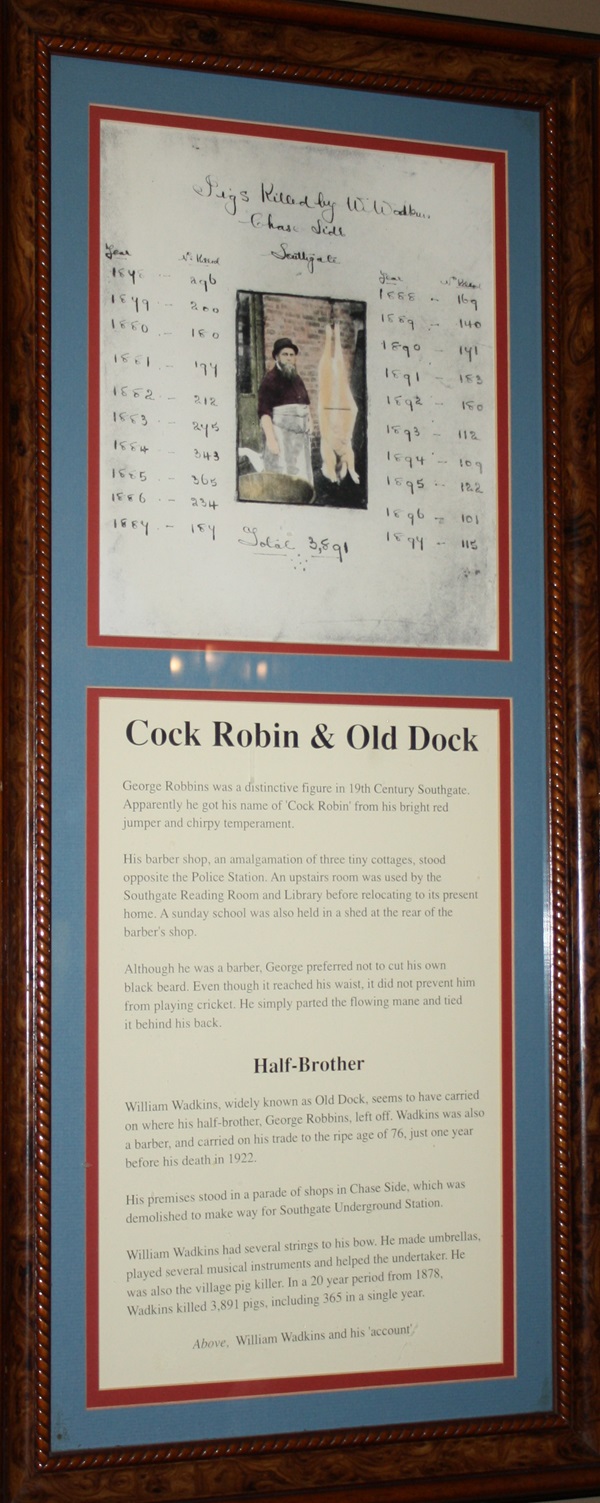
The text reads: George Robbins was a distinctive figure in the 19th century Southgate. Apparently he got his name of Cock Robin from his bright red jumper and chirpy temperament.
His barber shop, an amalgamation of three tiny cottages, stood opposite the Police Station. An upstairs room was used by the Southgate Reading Room and Library before relocating to its present home. A Sunday school was also held in a shed at the rear of the barber’s shop.
Although he was a barber, George preferred not to cut his own black beard. Even though it reached his waist, it did not prevent him from playing cricket. He simply parted the flowing mane and tied it behind his back.
Half Brother
William Wadkins, widely known as Old Dock, seems to have carried on where his half-brother, George Robbins, left off. Wadkins was also a barber, and carried on his trade to the ripe age of 76, just one year before his death in 1922.
His premises stood in a parade of shops in Chase Side, which was demolished to make way for Southgate Underground Station.
William Wadkins had several strings to his bow. He made umbrellas, played several musical instruments and helped the undertaker. He was also the village pig killer. In a 20 year period from 1878, Wadkins killed 3,891 pigs, including 365 in a single year.
A print and text about Benjamin Waugh.
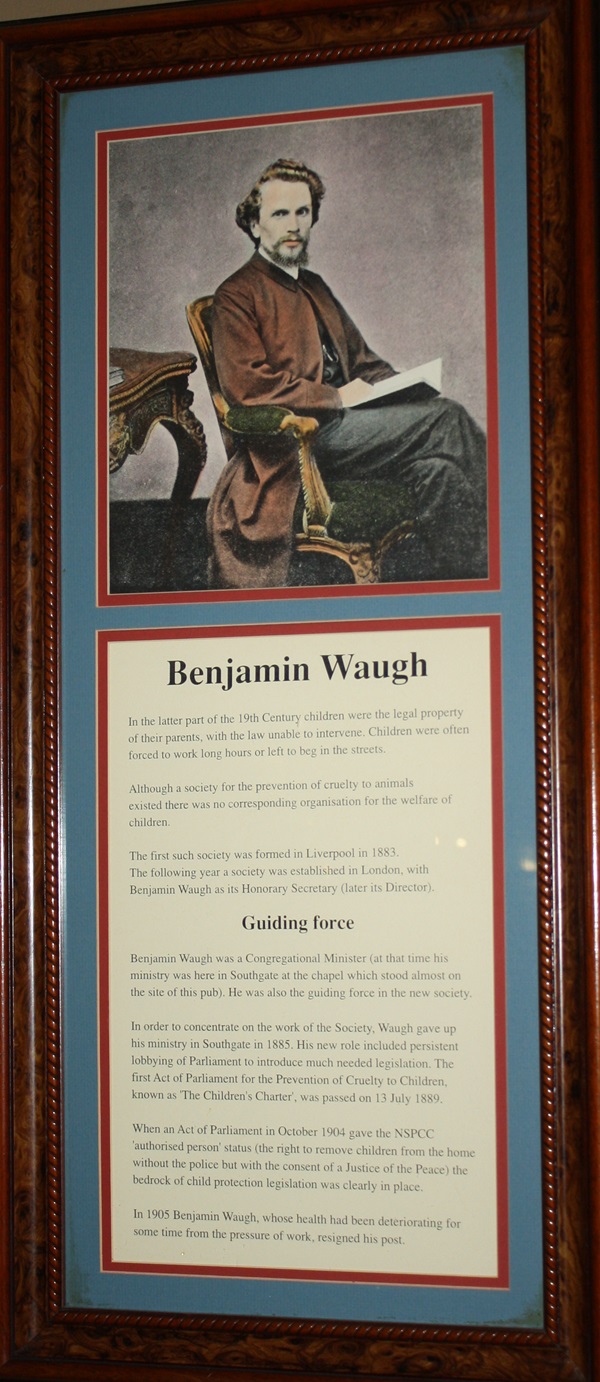
The text reads: In the latter part of the 19th century children were the legal property of their parents, with the law unable to intervene. Children were often forced to work long hours or left to beg in the streets.
Although a society for the prevention of cruelty to animals existed there was no corresponding organisation for the welfare of the children.
The first such society was formed in Liverpool in 1883. The following year a society was established in London, with Benjamin Waugh as its Honorary Secretary (later its director).
Benjamin Waugh was a Congregational Minister (at that time his ministry was here in Southgate at the chapel, which stood almost on the site of this pub). He was also the guiding force in the new society.
In order to concentrate on the world of the society, Waugh gave up his ministry in Southgate in 1885. His new role included persistent lobbying of parliament to introduce much needed legislation. The first act of parliament for the Prevention of Cruelty to Children, known as The Children’s Charter, was passed on 13 July 1889.
When an Act of Parliament in October 1904 gave the NSPCC authorised person status (the right to remove children from the home without the police but with the consent of a Justice of the Peace) the bedrock of child protection legislation was clearly in place.
In 1905 Benjamin Waugh, whose health had been deteriorating for some time from the pressure of work, resigned his post.
A photograph of Chase Side Corner, Southgate, c1910.
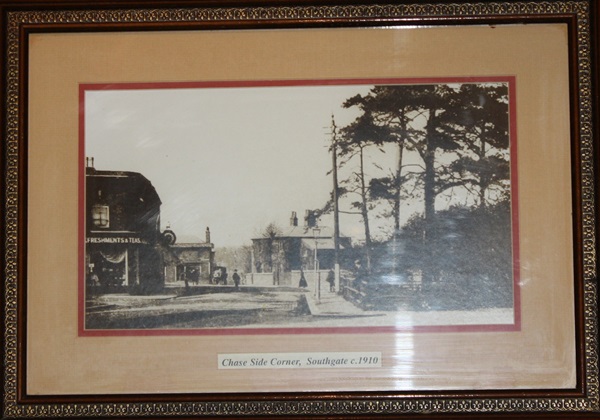
A photograph of Chase Side, Southgate, c1906.
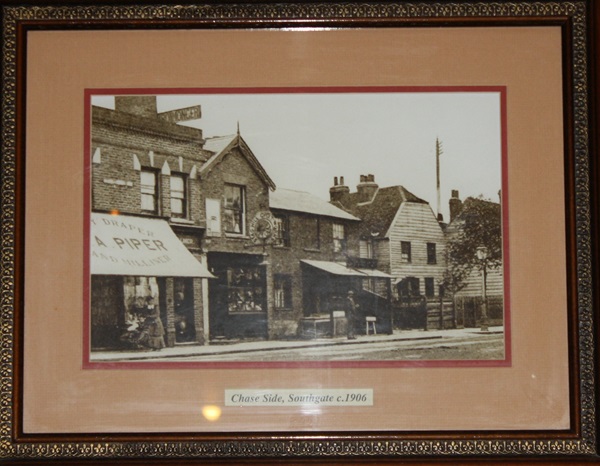
A photograph of John Eaton, Livery Stables, Chase Side, c1905.
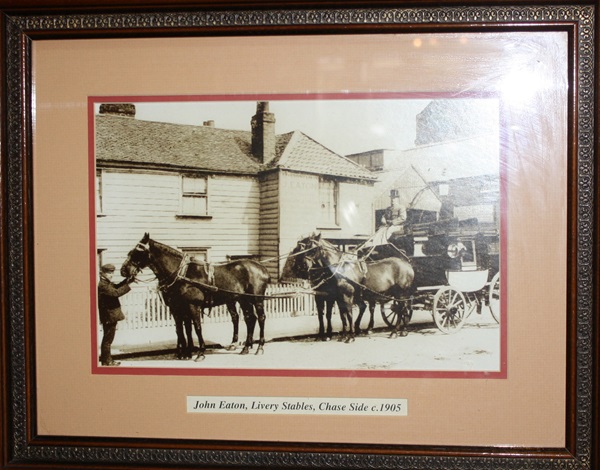
A photograph of the Baptist Church, Southgate, c1906.
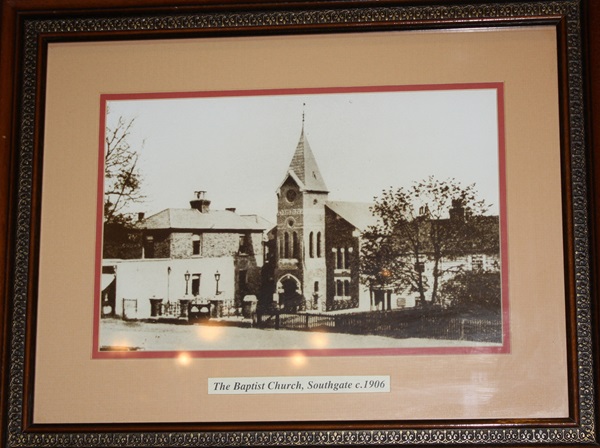
A photograph of High Street, Southgate, c1905.
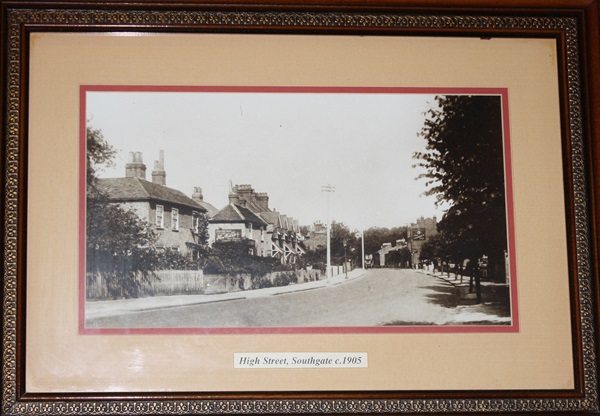
A photograph of Surry’s Timber Yard, High Street, Southgate, c1886.
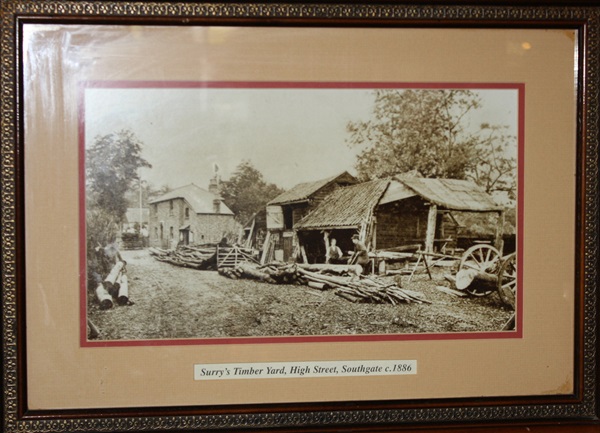
A photograph of the green, Southgate, c1905.
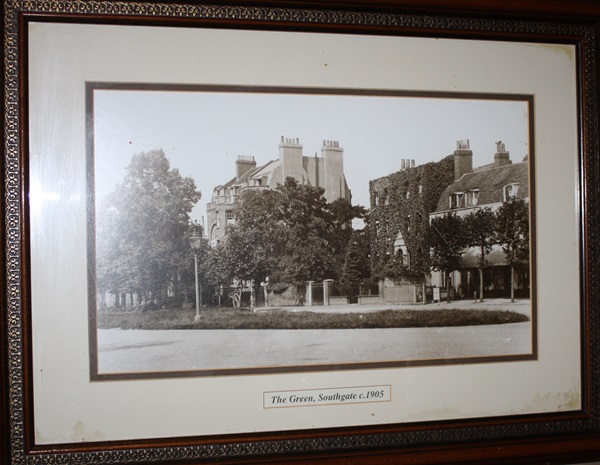
A photograph of Bunkers Corner, Southgate, c1908.
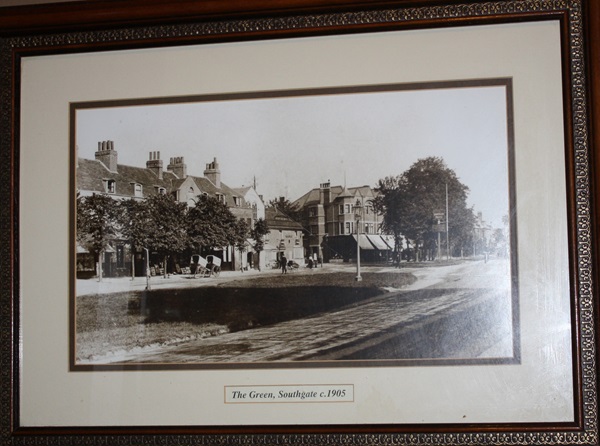
A photograph of Southgate Station, c1938.
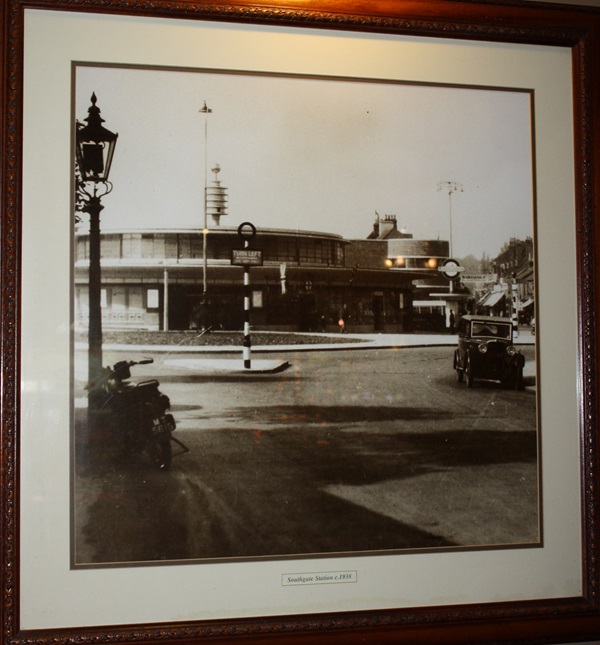
A photograph of the green, Southgate, c1905.
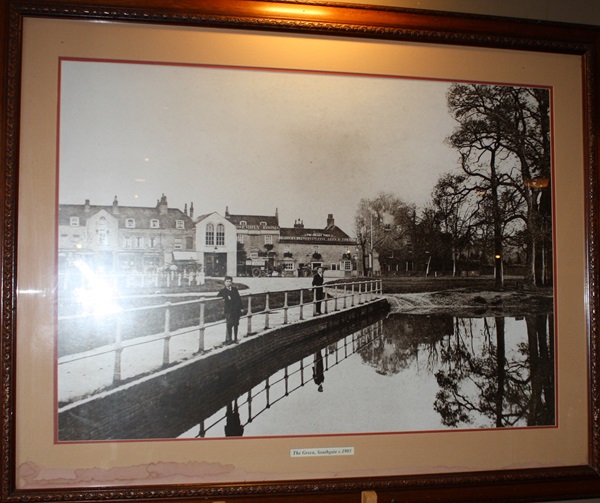
A photograph of the Old Smithy, High Street, Southgate, c1905.
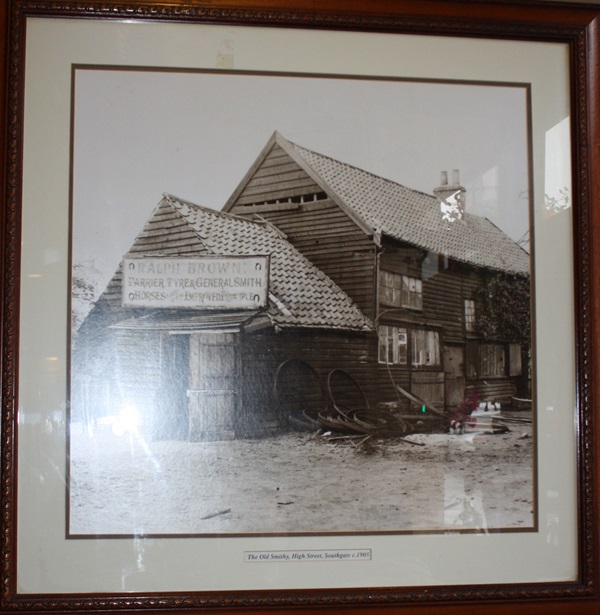
J D Wetherspoon gratefully acknowledges the help given by Graham Dalling, Local History Officer, London Borough of Enfield, in compiling this local history display.
External photograph of the building – main entrance.
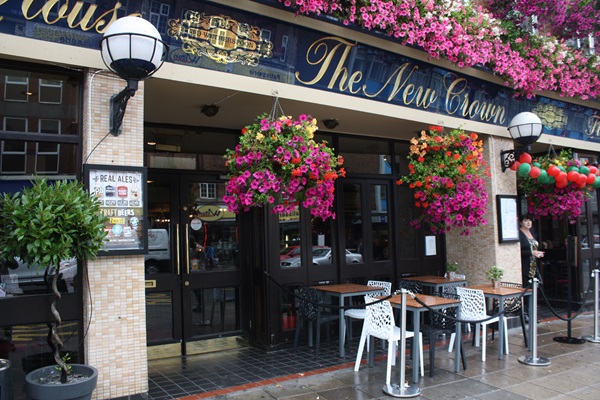
If you have information on the history of this pub, then we’d like you to share it with us. Please e-mail all information to: pubhistories@jdwetherspoon.co.uk